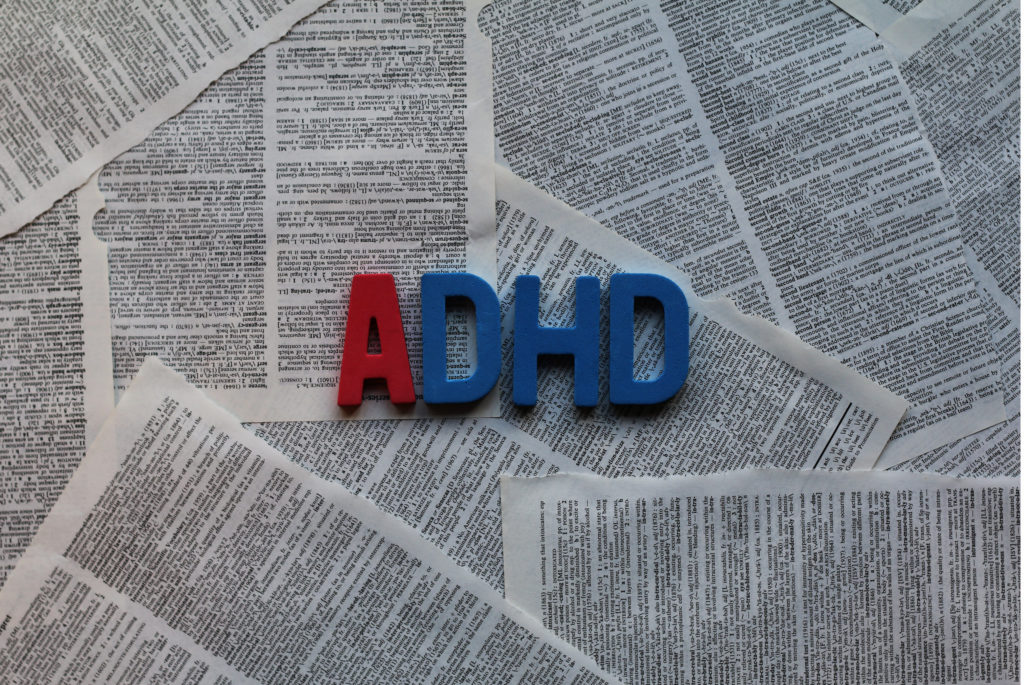Seeking to explore the relationship between research and clinical procedures applied in the identification of attention deficit hyperactivity disorder (ADHD), Rachel Longridge, Shelley Norman, William Henley, Tamsin Newlove Delgado & Tamsin Ford recently collaborated on a secondary analysis using data from Child and Adolescent Mental Health Service (CAMHS) programs in Britain. Their findings, published in Child and Adolescent Mental Health, indicate poor agreement between two evaluative systems, and across multiple time points. These results point to a need for improved assessment approaches, particularly when assessments are intended to inform prevention and treatment strategies. Many children who had received research-associated ADHD classifications did not receive a definite diagnosis from a clinician within the two years following initial rating.
The National Institute for Clinical Excellence (NICE) recommends group-based or individual parent-training as a first-line treatment for moderate impairment associated with ADHD. Results from Longridge and colleagues’ study indicate limited parent access to programs of this sort. The authors note that the introduction of the Children and Young People’s Improving Access to Psychological Therapies (CYPIAPT) program in England may have served to address some of the gaps highlighted concerning parent involvement in intervention, but further research would be needed to determine its impact.
“A steady increase in prevalence has been reported in recent years, along with an increase in the prescribing of stimulant medication for ADHD. This has led to some public concern that ADHD is now being over-diagnosed and stimulant medications are being prescribed too readily by clinicians,” the authors write.
“Substance misuse is a commonly cited concern from parents. Drug treatment is the first-line treatment for school-aged children with severe ADHD, and second-line for those with moderate impairment. Group-based or individual parent-training is the first-line treatment for those with moderate impairment.”

The sheer volume of ADHD research in recent years is notable. Substantial research has been done to evaluate the validity of the construct and the reliability of assessment procedures, to construct treatment options, and to determine the acceptability, feasibility, and effectiveness of treatment – yet, the topic remains fraught with controversy. There are no biomarkers to indicate the presence of ADHD, and assessment requires judgments by the child, parent, school professional, and medical personnel regarding patterns of inattention, hyperactivity, and impulsivity. Boys are more likely to be diagnosed with ADHD than girls, as are children with later-year birthdays (i.e., the youngest students their grade-level cohorts), and prevalence estimates hover around higher figures in the US relative to the UK. Expectations and school structures may highlight behavioral differences among some students more so than student-level differences in functioning.
Many studies have shed light on concerns surrounding diagnosis surrounding ADHD and patterns of overreliance on medication as a first-line approach to treatment. Guidelines issued by the American Academy of Child and Adolescent Psychiatry suggest medication as a first-line treatment for symptoms of ADHD in children, including those 6 and under. Comparatively, the UK’s NICE guidelines are among the most conservative comprehensive guidelines, recommending the use of medication, regardless of severity level, only after appropriate environmental modifications have been considered. (For more information, see the following informational resource available through Mad in America addressing ADHD.)
“There is some disagreement among both clinicians and researchers over the persistence of hyperactive and inattentive symptoms into adolescence and adulthood. Associations have been demonstrated between ADHD and lower academic achievement, unemployment, driving violations and collisions, substance misuse and serious antisocial behavior,” they write.
“Early recognition and appropriate treatment is therefore of the utmost importance to optimize children’s development and reduce the likelihood of adverse outcomes. Evidence-based treatments currently available include stimulant medication and parent training.”
Considering the potential impact of environmental factors on ADHD, and abundant research pointing to the value of early intervention in reducing behavioral challenges in childhood and associated later-life outcomes, inconsistency in diagnostic practices is problematic. Barriers in assessment procedures may delay access to supports, and delayed support may result in more severe approaches in the context of ultimate intervention.
Data from two London-based CAMHS were applied in the analysis process, including evaluations at multiple time points representing 288 children’s cases. All participants were between 5 and 10.75 years of age and belonged to the same entry-point cohort. Their families completed the Development and Well-being Assessment (DAWBA), an instrument based on DSM-IV and ICD-10 diagnostic criteria, at baseline. Additionally, an abbreviated version of the DAWBA was administered to the teachers of participants whose parents granted permission. Results from the DAWBA generate a provisional diagnosis based on an algorithm.
Clinical evaluations by the provider (i.e., no, possible, or definite diagnosis of ADHD) were also conducted at baseline and at five time points (every six months) post-admission. Due to patient dropout, it was not possible to include the final data collection window in analyses. In summary, Longridge and team were interested in knowing the extent to which algorithm determinations described above were consistent with clinician determinations at entry, and if clinician-determined classifications were issued reliably.
With regard to overall consistency in research vs. clinical diagnosis:
“[Results] demonstrated poor agreement between clinician’s diagnosis of ADHD and a clinically rated standardized diagnostic assessment. […] A large proportion of the disagreement between the research and clinician diagnoses in this study seems to have arisen from children assessed by clinicians as having possible ADHD. Time is an important factor in the diagnosis of ADHD, and it will often not be possible to make a definite diagnosis based on initial contact. It, therefore, seems entirely appropriate that clinicians would identify a larger number of children as having possible ADHD at initial assessment.”
And, regarding the internal consistency of clinical determinations:
“The definite and possible diagnoses of ADHD made by clinicians in our sample showed considerable instability over time. Clinical diagnoses are very often unreliable, and the instability seen in this study may have arisen in part from diagnostic uncertainty early in the child’s clinical journey. The lack of use of standardized diagnostic assessments in clinical practice is impeding progress towards faster and more accurate diagnoses. However, the results likely also represent a degree of fluctuation of ADHD symptoms, or the intrusion of escalating difficulties of other kinds for some children.”
The extent to which these findings would translate on an international scale is yet unknown. However, discouraging results regarding a lack of reliability regarding diagnostic decisions of ADHD draw attention to critical discussion and policy change warranted globally regarding what exactly constitutes ADHD.
****
Longridge, R., Norman, S., Henley, W., Delgado, T. N., & Ford, T. (2018). Investigating the agreement between the clinician and research diagnosis of attention deficit hyperactivity disorder and how it changes over time; a clinical cohort study. Child and Adolescent Mental Health, 24(2), 133-141. (Link)















I notice that lead is never mentioned in conjunction with ADHD, despite its being the most dangerous instigator of “ADHD” type behavior, as well as being likely resistant to the alleged treatment for this condition. Maybe it’s because hair sampling is a no-no in present day medicine and psychiatry.
Report comment
Removed for moderation.
Report comment
Stop defaming and drugging our children, DSM deluded “mental health” loonies. Anyone who force feeds little children drugs that are chemically identical to cocaine is disgusting. Leave the children alone.
An example of how insane and criminal the “mental health” workers are: No one, but the mother, was concerned when a little boy switches from a “school for gifted children” into the public school in first grade. Where he was required to take a class in remedial reading, for unknown reasons at this point.
“Mental health” lunatics, who knew nothing about the family or what happened, however, do swear up, down, left, right, and backwards, that there is zero possibility that the child could have been abused. These “mental health” loonies go on to attempt to murder this concerned mother 14 times, all with various different anticholinergic toxidrome poisonings, according to medical records and research.
The mother is eventually handed over medical evidence that her child had been sodomized, at the home of one of the board members, as well as likely at that private school. No one will investigate, however, and none of the doctors report the crime. But rumors of that medical evidence of the abuse being handed over did scare the private school into closing it’s doors forever, on of all days, 6.6.06.
Several years later, when the well behaved child largely heals from the child abuse. And he goes from remedial reading in first grade to getting 100% on his state standardized tests, by eight grade. This is when the school social worker freaks out, and wants to get her grubby little, white trash hands on this well behaved, intelligent child. Psychos!
Thankfully, my child’s science teacher had heard of genetics, and was capable of understanding the concept that intelligent families have intelligent children. Oh, and now we understand that the number one actual societal function of all branches of our “mental health” industries, historically and today, is covering up abuse and rape of children, despite this being illegal, of course.
https://www.indybay.org/newsitems/2019/01/23/18820633.php?fbclid=IwAR2-cgZPcEvbz7yFqMuUwneIuaqGleGiOzackY4N2sPeVXolwmEga5iKxdo
https://www.madinamerica.com/2016/04/heal-for-life/
And we know everything these child rape covering up “mental health” lunatics believe in, the DSM, is all based upon scientific fraud, and is both “invalid” and “unreliable.”
https://www.nimh.nih.gov/about/directors/thomas-insel/blog/2013/transforming-diagnosis.shtml
I got an idea, let’s arrest the pedophiles and child rape covering up “mental health” criminals instead. And stop turning child abuse survivors and their legitimately concerned parents into the seriously “mentally ill” with the psychiatric drugs en mass.
We wouldn’t have run amok, societal pedophilia and child sex trafficking problems today, if we ended the reign of terror of the fraud based, child rape covering up, “mental health” criminals.
https://globalfreedommovement.org/putin-blasts-euro-western-culture-of-pedophilia-and-satanism/
https://www.nytimes.com/2018/04/11/us/backpage-sex-trafficking.html
Stay away from our children, insane and delusional DSM worshippers. And children can heal from abuse, which the “mental health” loonies believe is impossible, if the child abuse survivors are kept away from the “mental health” loonies. Child abuse does NOT cause your DSM disorders, your drugs do.
My son graduated with highest honors, Phi Beta Kappa, just like his grandfather, because I kept him AWAY from the insane psychiatrist who wanted to drug him, after learning the medical evidence of the abuse was handed over. As well as keeping him away from the insane school social worker.
Leave our children alone! Learn to live and let live. You’ve lost your minds with your unchecked power, satanic, child rape covering up, “mental health” lunatics. Stop defaming and poisoning the children!
Report comment
Wasn’t it Pink Floyd that said, “Leave the kids alone!” I think that was from “The Wall,” but I’m not sure.
Oh, now I remember, “Teacher, leave those kids alone.” Those were the words.
I was working in education and I saw them try to fit the kids into the ADHD box. This worked out great for the kid on occasion because he was able to use his “severe attention disorder” as excuse to skip school. He couldn’t pay attention or he got distracted…He knew what was going on.
Funny, they said to me, “We have to know that he’s in school. If he is skipping school, and goes and robs a bank, the school would be held responsible.” Now this made no sense given his age, and also, if he was supposedly that distracted then how could he concentrate well enough to pull off a bank robbery? I was so concerned that already, he was tagged as a juvenile delinquent.
One day, after my job had really gotten bad, I was crying so hard I could not contain myself. When you see abuse via diagnosis and coercing onto disability, for me, it was so upsetting that I started to refuse to do my job. I wanted to be kind instead, and they didn’t like this very much.
Report comment
I have repeatedly expressed my concerns to MIA when they continue to publish pieces in which psychiatric diagnostic terms are used without a single mention of the fact that they are NOT scientific, that it is NOT helpful to use these terms (including ADHD) when trying to alleviate suffering or help people change their behavior IF THEY WANT TO, and that getting ANY psych label exposes one to a vast array of kinds of harm, and that there are MANY other approaches that do NOT involve pathologizing or drugging and that have few or no risks and are shown to be effective. I would like to know which person or people at MIA are currently in charge of overseeing such things, and I beg MIA yet again to stop helping with the reification of these labels!
Report comment
Paula, thank you. I agree with you and also, I do not think that MIA should continue to uphold MH degreed people as “experts.” Those of us who have been locked up and know what it is like are more “expert” than they are. Why are we not heard? I am especially furious at Daniel Mackler, who brilliantly denounces his own profession and then, has the nerve to use his credentials as proof of his expertise. Huh? You can’t have it both ways…..
Report comment
Hmm…that didn’t work. Paula I want to thank you for pointing this out and I hope you have a bit more influence on MIA than I possibly could. I saw the diagnoses harming the kids with whom I worked. They said to me literally. “I do not like being singled out.” And other stuff they told me. They weren’t able to articulate it because I do not think the families or the kids been fully informed. They did not know that they were seen as future delinquents, but the distrust that they were treated with likely told them exactly what the message was.
Report comment
Julie Greene, I was surprised that in the recent MIA piece you wrote, you described yourself as having had an eating “disorder.” I don’t understand why you used that term. What’s wrong with “eating problem”? Why do you continue to use such terms when you object to MIA’s allowing them?
Report comment
As I said in my email to you, I do not object to word “disorder.” I do object to “mental disorder” or “mental illness.” I do feel, as said, that ED is a nutritional disorder and does not belong in the DSM (not that anything does…the book needs to be classified at a hate book, a book of eugenics). It should be taught in nutrition schools. It isn’t. Not only that, most insurance plans don’t cover nutrition, not unless you’re diabetic or have kidney disease. Maybe that’s because nutritional counseling does help, and psychiatry would lose money if people could freely access it. In fact, learning about nutrition does help a lot of people, no matter what the issue is.
I do not think for one minute that ED is a brain disease. I know it isn’t caused by perfectionism or poor self-esteem. All of these are myths imposed on patients, as is the use of incarceration and force, often to their detriment.
Report comment
Julie Greene, I do object to the word “disorder” in “eating disorder,” because it pathologizes it. I know you do not consider eating problems to be brain diseases, but to say “it” (there are actually various kinds of eating problems) is a nutritional disorder is a statement that does not include consideration of the ways that intolerable pressures on girls and women about their appearance being hugely important in determining their worth, and those pressures definitely do contribute in major ways to many girls’ and women’s frightened, often extreme ways of dealing with food. These factors can certainly lead to serious nutritional problems…I agree.
Report comment
Paula, this is true. But all women and girls have pressure on them. ED is on the rise. I think that’s because psychiatry and the ED industry realized they could make a few bucks off of us. I have seen it myself. Kids start going to those treatment centers, and then, they turn into revolving door syndromes. I think psychiatry and psychology need to butt out and quit calling it a mental disorder.
There are plenty of environmental issues (pollution, ozone layer, drugs) that contribute to cancer. In fact, environmental issues, and especially stress and poverty, cause an awful lot of diseases out there. Just because stress and poverty cause disease does not make all those diseases mental disorders.
I went through both binge eating and anorexia, and yes, you do suffer from these. Most of us truly wanted to be able to eat normally. I felt like I would rather have breast cancer than an ED. By the time you’ve been through years of therapy, drugging, and incarceration, the original reason why you went on that first diet gets completely lost and buried. Because psych and big money took over ED, it now perpetuates the problem, gives people more diagnoses, leading to “success” rates that are an embarrassment, though they will not admit this.
Report comment
Not only that, now that I am on this subject, many people have approached me and told me stuff like, “I went to college and didn’t know how to handle eating at the dining commons.” “If only I had known that going on an extreme diet would do this.” “I didn’t know how to cook.” “I didn’t realize that losing ten pounds shouldn’t be done in two weeks. I wish I had known.”
Teens so often go on extreme diets due to not knowing the potential harm in it. The reasons are varied but certainly not liking oneself is only one of them.
Report comment